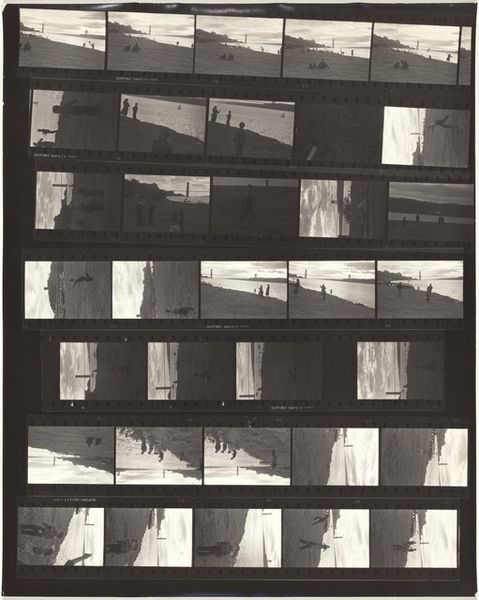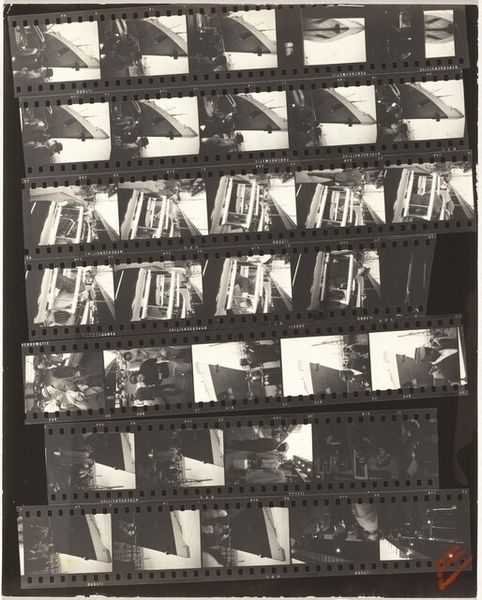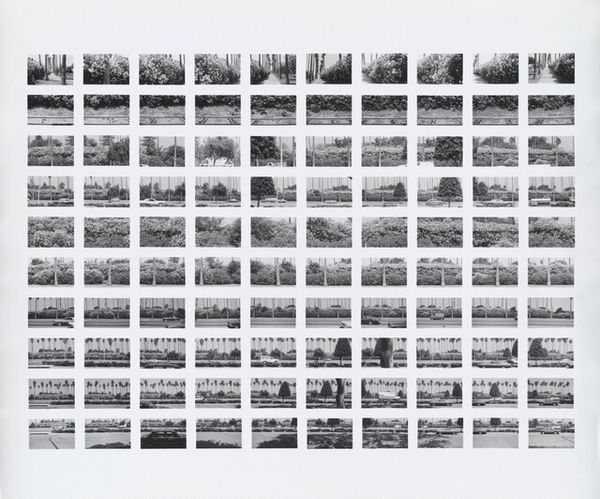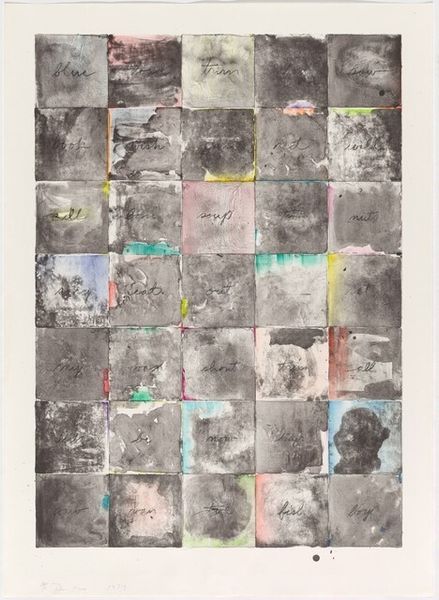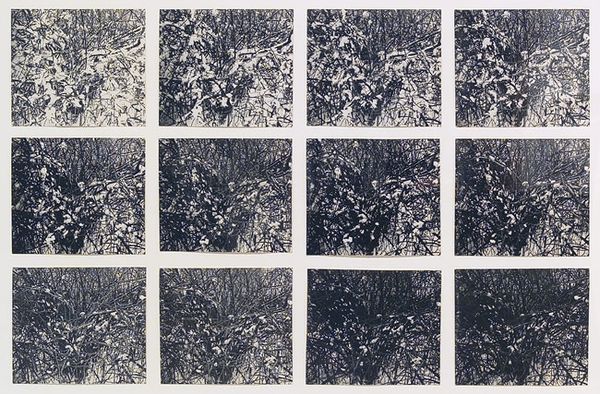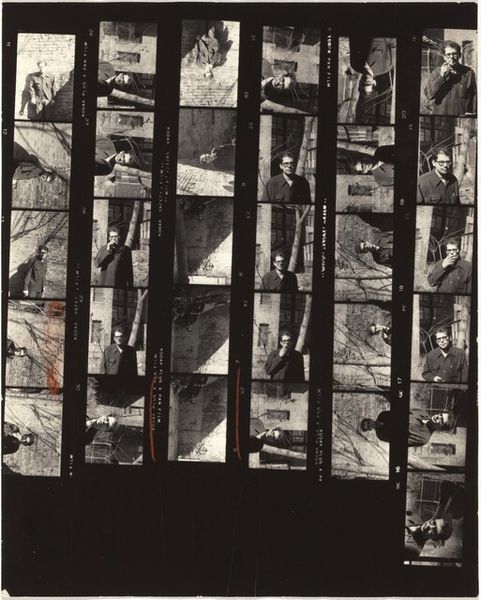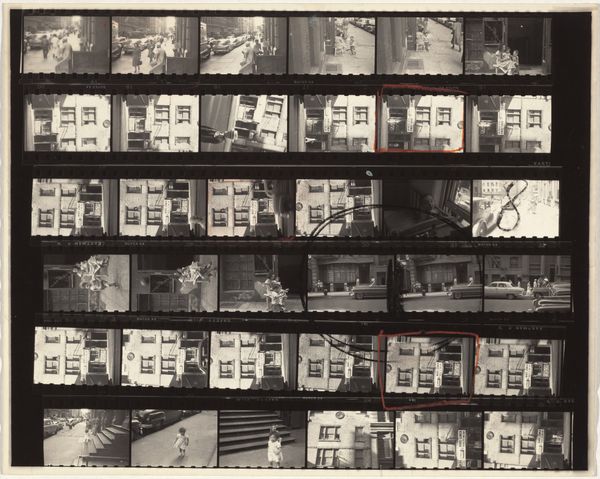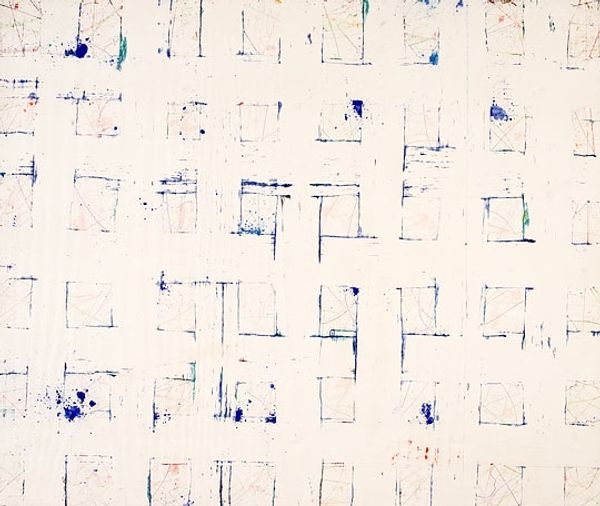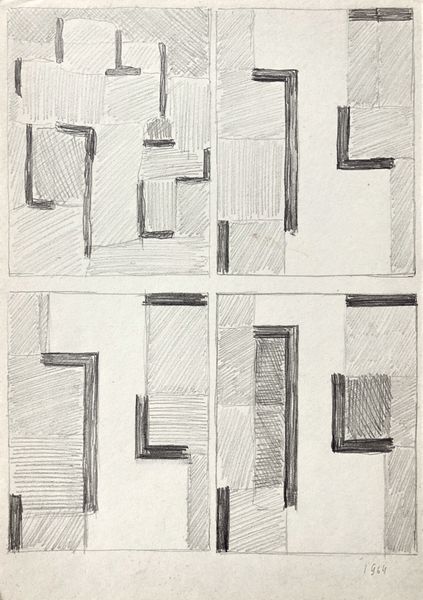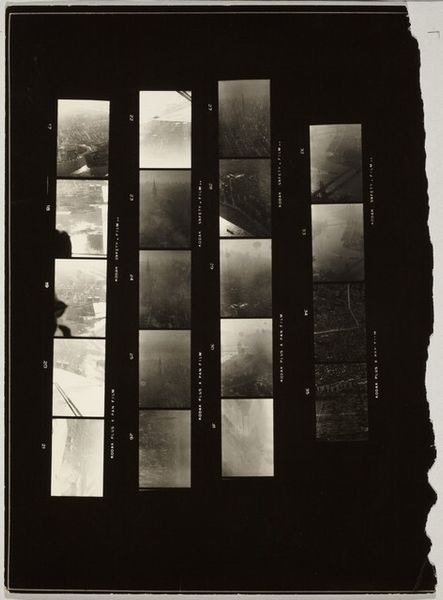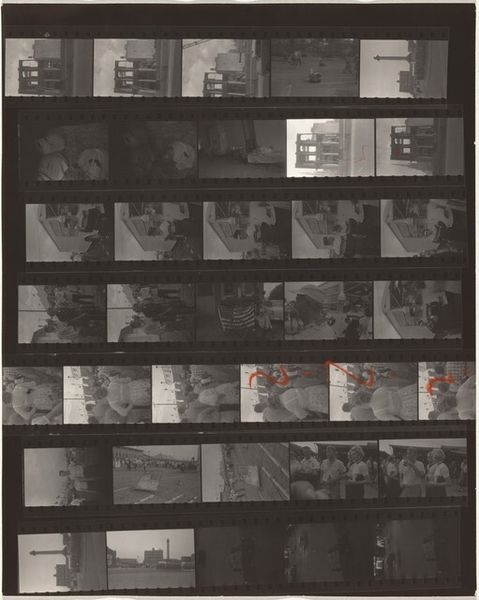
mixed-media, collage, print
#
mixed-media
#
collage
#
conceptual-art
# print
#
body-art
#
architectural drawing
#
modernism
Dimensions: image: 65 × 103 cm (25 9/16 × 40 9/16 in.) mount: 69.4 × 107 cm (27 5/16 × 42 1/8 in.) framed: 71.76 × 109.22 × 2.54 cm (28 1/4 × 43 × 1 in.) overall: 71.76 × 764.54 × 2.54 cm (28 1/4 × 301 × 1 in.)
Copyright: National Gallery of Art: CC0 1.0
Curator: This collage, "Svolgere la propria pelle," or "To Unroll One's Skin," was crafted between 1970 and 1971 by Giuseppe Penone. It's a captivating blend of mixed media, prints, and photographs, showcasing his conceptual approach to art. What’s your immediate take on this one? Editor: The immediate feeling is fragmented, yet organic, like looking at a dissected organism under a microscope, where each cell holds a tiny universe of information. Curator: That's a very poetic observation. The grid structure definitely evokes a scientific arrangement, doesn't it? What strikes me most is the contrast. These fragmented images of skin, repeated and re-contextualized, feel both intimate and oddly alienating. Editor: Yes! The grid amplifies that unsettling feeling. Grids are inherently artificial, intellectual. To impose it upon something as vulnerable as skin...it makes you think about control, doesn’t it? What we try to contain or dissect or, indeed, unroll. Curator: Exactly. Penone, a key figure in Arte Povera, often explored the connection between humans and nature. This piece, through its body art lens, suggests a process of unveiling. But what are we unveiling? Are we peeling back layers of identity, of perception? Editor: Or are we just trying to categorize the intangible? Skin, after all, is our interface with the world – a boundary, yes, but also where we experience touch, pleasure, pain. Mapping it like this makes me wonder about the limits of objective knowledge when applied to something so subjective. The emptiness created by the unprinted spaces is visually unsettling. Curator: That tension, that inherent impossibility, is perhaps Penone's point. He invites us to reflect on the relationship between our internal selves and our physical form, reminding us that the surface is never the whole story. Editor: It feels incredibly prescient, too. In our digitally-driven world, where faces and bodies are filtered and dissected online, this feels more relevant than ever. We’re all "unrolling" ourselves, one curated post at a time. Curator: A poignant thought. Penone’s work consistently offers this delicate balance between the natural and artificial. I believe it’s asking how much of ourselves we're willing to show, and what gets lost—or perhaps, found—in the translation. Editor: It truly offers endless readings. It’s a remarkable dance between image and idea.
Comments
No comments
Be the first to comment and join the conversation on the ultimate creative platform.
